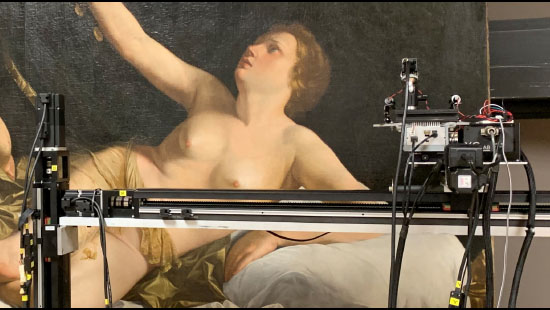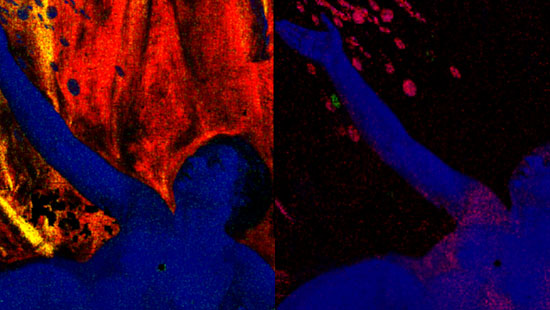About the Project
Orazio Gentileschi (1563-1639) was born in Tuscany but began his career as an artist in Rome. Later, he moved back north to Fabriano and Genoa before moving to Paris and London. Aside from his travels, Orazio Gentileschi is known for copying his own works but the process is still unclear. As an artist who moved during his career, one might wonder if he sourced painting materials locally or if he traveled with his pigments? Many questions this research tried to answer.
In this project, we are undertaking an in-depth scientific investigation of Orazio Gentileschi’s Danäe in the collection of the Cleveland Museum of Art (CMA). Danäe was painted twice by the artist around 1622-23, the other version being in the collection of the Getty Museum. Using X-rays, the Getty picture was determined to be the first version painted due to artist-made alterations visible to the composition that are not present in the Cleveland version. Therefore, the scientific investigation aimed to compare the materials and techniques used in the two versions to understand if they may have been created at different times and places or simultaneously. Furthermore, the investigation aimed to highlight possibilities of tracings to transfer the composition from the first, Getty painting to the second, CMA version, highlighting the copying process. This study, therefore, aims to add to the growing knowledge about Orazio Gentileschi’s materials and working methods.

The process
Macro-X-ray fluorescence (MA-XRF) elemental mapping and hyperspectral imaging (HSI), were selected as the complimentary non-invasive analytical techniques, and used along micro-invasive techniques (SEM-EDX, Raman, hyperspectral microscope) on paint cross-sections to characterize the pigments and painting techniques used in Orazio Gentileschi’s Danaë in the collection of the Cleveland Museum of Art. Mapping and imaging were performed in-situ at the Cleveland Museum of Art while cross-sections investigation was performed using Northwestern University state-of-the-art facilities.

The impact
The scientific investigation of the Baroque painting was undertaken in parallel to the conservation treatment. This allowed for ample discussions between scientists, conservators, and curators based on the scientific results and observations. While the palette appears traditional for the time period, some traces of elements and elemental combinations identified could be used as markers to understand some potential changes related to pigments sourcing. Comparisons with the first version of the same painting and other compositions from the same period may also provide a better understanding of the technique variations found in artistic creations in a time when travels across Europe was common practice.


